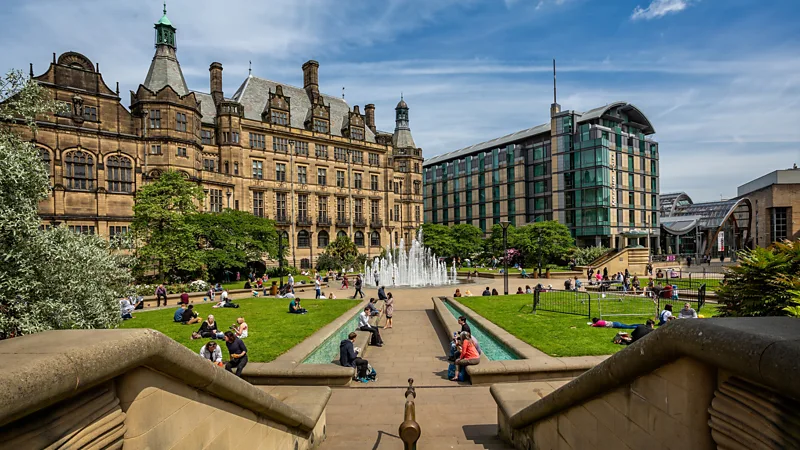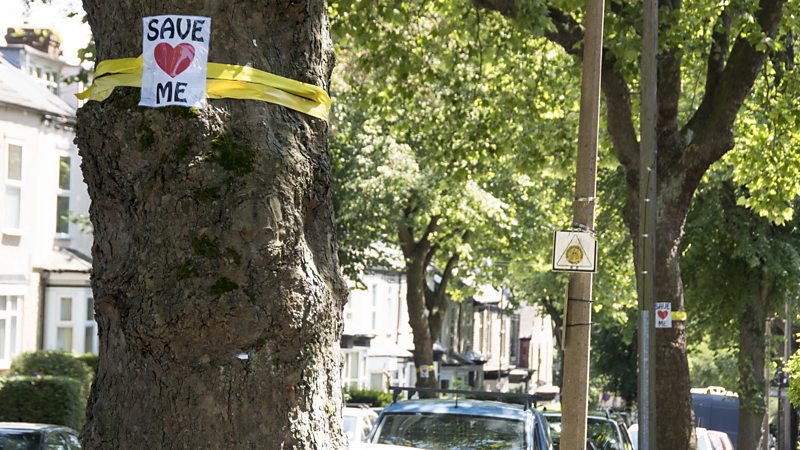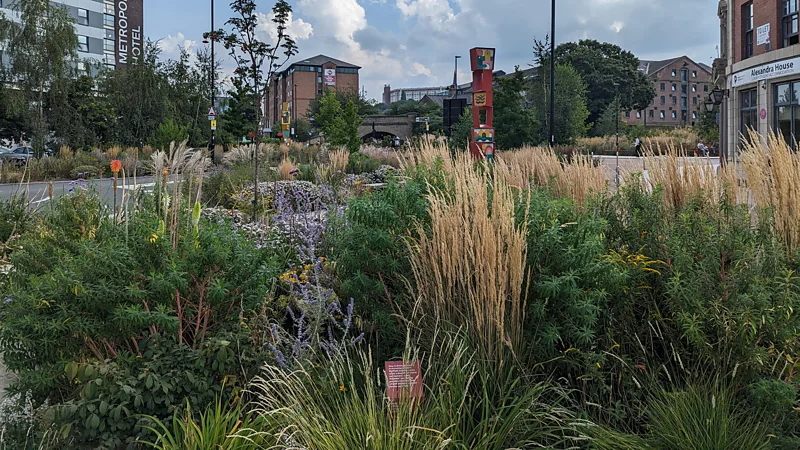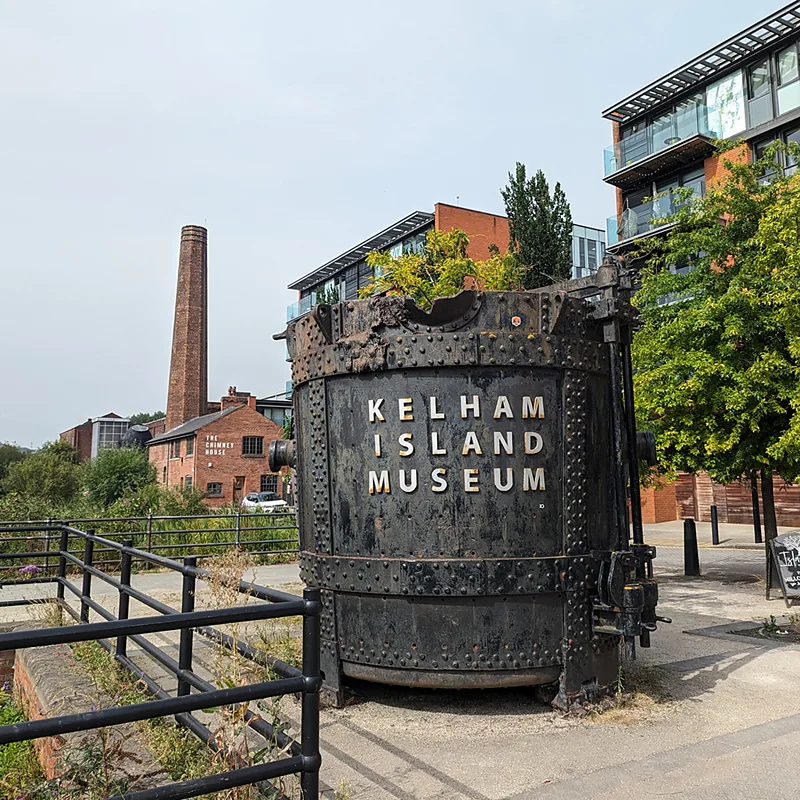The industrial English city with more trees than people
 Sheffield, the largest city in South Yorkshire, developed amidst rivers, valleys, and industrial furnaces. Despite its industrial past, it has transformed into the greenest city in the UK.
Sheffield, the largest city in South Yorkshire, developed amidst rivers, valleys, and industrial furnaces. Despite its industrial past, it has transformed into the greenest city in the UK.
Inside the Kelham Island Museum in Sheffield, sunlight flooded through the lofty warehouse, illuminating the massive River Don Engine. This colossal 425-ton, 12,000-horsepower steam engine, originally designed for rolling armour plating, came to life with subtle steam emissions, showcasing its immense power to the gathered spectators. It served as a poignant reminder of the city's industrial legacy.
Sheffield's landscape is characterized by its hills, with neighborhoods sprawled across seven gentle peaks encircling the valley where the city center lies. Situated at the junction of five watercourses—the River Don and its four tributaries, the Sheaf, Rivelin, Loxley, and Porter Brook—the city's evolution was deeply influenced by its water resources.
The swift-flowing waters of these streams drove waterwheels that powered numerous mills from as early as the 12th century. Sheffield emerged as a hub for the production of small steel goods like cutlery and knife blades. The Industrial Revolution further propelled its growth, solidifying its reputation as a leading steel producer and earning it the moniker "The Steel City."
Transformation into a Green City
 Sheffield, once a dominant industrial hub, now boasts the greenest city center in the UK, with an impressive 61% of its catchment area dedicated to parks, woodlands, and gardens. This transformation includes significant portions of the Peak District National Park, characterized by its expansive moors and heathlands. While access to the countryside has long been a feature of Sheffield, recent years have seen a growing public appreciation for the city's green spaces.
Sheffield, once a dominant industrial hub, now boasts the greenest city center in the UK, with an impressive 61% of its catchment area dedicated to parks, woodlands, and gardens. This transformation includes significant portions of the Peak District National Park, characterized by its expansive moors and heathlands. While access to the countryside has long been a feature of Sheffield, recent years have seen a growing public appreciation for the city's green spaces.
In 2012, controversy erupted when Sheffield's council initiated the felling of healthy trees to make room for new saplings. This sparked outcry among residents, leading to years of debate and negotiation. Eventually, in December 2018, an agreement was reached between local campaigners and the city council, paving the way for the creation of the Sheffield Street Trees Partnership (SSTP) in 2019. According to Nathan Edwards, Chair of SSTP, this incident reignited Sheffielders' connection to their green spaces, ultimately leading to a resurgence in environmental consciousness.
Today, Sheffield boasts approximately 4.5 million trees, outnumbering its human population of just over 550,000. With an impressive seven trees per resident and a tree cover percentage of 18.4%, nearly one-fifth of the city's surface is adorned with lush greenery. In 2022, Sheffield's efforts were recognized internationally when it was designated as one of the Tree Cities of the World by an organization dedicated to celebrating municipalities that actively manage their urban forests.
Exploring Sheffield's Green Spaces: A Walk Through History and Innovation
Sheffield boasts an impressive network of green spaces, celebrated in the comprehensive Greenground Map. This ambitious project highlights the city's 800 green areas, including trails and walks like the Sheffield Round Walk and the Blue Loop. Following sections of the Sheffield Round Walk with a detour into the city center, the author embarks on a journey that blends history and environmental awareness. The walk begins with a climb into Whiteley Woods, followed by a descent to Porter Brook, where the Shepherd Wheel Workshop stands as a testament to Sheffield's link between natural resources and its industrial past.
Following sections of the Sheffield Round Walk with a detour into the city center, the author embarks on a journey that blends history and environmental awareness. The walk begins with a climb into Whiteley Woods, followed by a descent to Porter Brook, where the Shepherd Wheel Workshop stands as a testament to Sheffield's link between natural resources and its industrial past.
The path continues through Endcliffe Park, a haven for families with its ponds, stepping stones, and sports fields. Next comes the Sheffield Botanical Gardens, a historical gem with Victorian flowerbeds, diverse garden styles, and a rare 19th-century bear pit. Here, Dr. Laura Alston emphasizes the privilege of having so much green space within an urban environment.
The walk concludes at Weston Park, the city's first public park, established in the 1870s. This park served as a green haven and a testament to the growing recognition of the need for urban green spaces.
Sheffield's Green Regeneration
 Sheffield's commitment to green spaces extends beyond traditional parks. The West Bar area exemplifies urban regeneration through its innovative "Grey to Green" project. This formerly neglected area has been transformed into a thriving wildlife corridor boasting flowers, sculptures, and even bug hotels.
Sheffield's commitment to green spaces extends beyond traditional parks. The West Bar area exemplifies urban regeneration through its innovative "Grey to Green" project. This formerly neglected area has been transformed into a thriving wildlife corridor boasting flowers, sculptures, and even bug hotels.
Recycled materials create the foundation for this biodiverse haven, specifically designed to improve air quality and attract wildlife. The success of this project is evident in the buzzing bees, vibrant flowers, and peaceful atmosphere that now graces the River Don.
The walk concludes with a visit to Norfolk Heritage Park, a sprawling 28-hectare Victorian creation recommended by Dr. Alston for its historical significance and panoramic views. Towering trees line the long drive leading into this community space, offering ample room for exploration and respite from the bustling city. Standing amidst the park's undulating greenery, one is struck by the surprising sense of tranquility despite the city sprawling out in the valley below.
Blending Nature and Urban Life Sustainably
 Ranked as the greenest city in the UK and the second-greenest in Europe after Oslo, Sheffield boasts approximately 72% of green spaces. Mark Mobbs, the manager for city campaigns at Sheffield City Council, emphasizes that the city's green spaces are not only vast but also seamlessly integrated into daily life, connecting different neighborhoods and serving as accessible amenities.
Ranked as the greenest city in the UK and the second-greenest in Europe after Oslo, Sheffield boasts approximately 72% of green spaces. Mark Mobbs, the manager for city campaigns at Sheffield City Council, emphasizes that the city's green spaces are not only vast but also seamlessly integrated into daily life, connecting different neighborhoods and serving as accessible amenities.
He highlights Sheffield's unique accessibility to authentic greenery, emphasizing that it extends from the city center throughout the suburbs, offering more than just small patches of grass.
Mobbs underscores the symbiotic relationship between nature and culture in Sheffield, stating that the city's green spaces are integral to its identity. This blend of nature and urban life is seen as a crucial aspect of Sheffield's sustainable evolution, ensuring its vitality for generations to come, despite its industrial past.






































